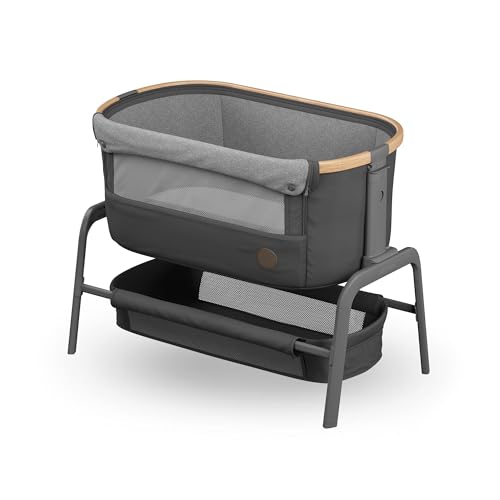The Essential Guide to Bedside Cots for Comfortable Sleep
In the journey of parenthood, among the most substantial obstacles new parents face is guaranteeing their baby sleeps conveniently while likewise granting them peace of mind. Bedside cots, also called co-sleepers or bedside sleepers, have gotten popularity as a solution to this issue. By permitting parents to keep their infants close during the night, these cots promote safety, benefit, and convenience. Bedside Cot For Baby's Room explores the benefits, features, and aspects to consider when selecting a bedside cot, together with addressing regularly asked questions to help parents in making notified choices.
What is a Bedside Cot?
A bedside cot is a type of crib designed to be positioned next to the moms and dad's bed. Numerous models include a side that can be reduced or totally removed, permitting easy access to the baby throughout sleep. This design not just helps with nighttime feedings but also establishes a safe sleeping environment for infants.
Table: Features of Popular Bedside Cots
| Feature | Description |
|---|---|
| Security Standards | Must meet or exceed safety compliance policies (e.g., ASTM, CPSC) |
| Height Adjustment | Adjustable legs to accommodate numerous bed heights |
| Breathable Materials | Mesh sides for ventilation and exposure |
| Portability | Light-weight and foldable for easy transport |
| Storage Options | Integrated storage solutions for keeping essentials close |
Advantages of Using a Bedside Cot
Enhanced Convenience
Among the main advantages of bedside cots is benefit. Parents can easily take care of their baby's needs without having to leave their bed. This can be particularly handy during late-night feedings or diaper changes.
Improved Bonding
Having the ability to see and hear their infant throughout the night fosters a more powerful psychological connection. Babies feel more safe when they are close to their parents, which can lead to much better sleep for both parties.
Minimized Risk of SIDS
Some research studies recommend that co-sleeping in a bedside cot may decrease the danger of Sudden Infant Death Syndrome (SIDS), as parents are more most likely to discover if their baby is having trouble breathing or remains in distress.
Motivates Independent Sleep
While infants might initially rely on closeness to drop off to sleep, having a bedside cot can encourage them to develop independent sleeping practices over time. This setup permits a smooth shift from proximity to self-reliance.
Aspects to Consider When Choosing a Bedside Cot
- Security Standards: Always confirm that the cot adheres to the most recent safety regulations. Try to find accreditations suggesting compliance with safety requirements.
- Size and Fit: Ensure the cot fits snugly beside the moms and dad's bed. Adjustable height settings are an essential feature to accommodate numerous bed types.
- Material Quality: Opt for cots made from non-toxic products with breathable fabrics. This makes sure the baby is safe while also enabling excellent air flow.
- Reduce of Use: Look for features that enhance usability, such as easy foldability, removable sides, and convenient storage compartments.
- Mobility: If you travel frequently, consider a cot that is light-weight and easy to disassemble or transfer.
Popular Bedside Cot Options
The marketplace is flooded with options, making it important to select wisely. Here are some popular choices:
1. Chicco Next2Me
- Adjustable height settings
- Easy attachment mechanism
- Breathable mesh side panels
2. Halo Bassinest
- Turns 360 degrees for easy access
- Nightlight and soothing sounds
- Adjustable height to fit numerous beds
3. BabyBjörn Cradle
- Basic design with natural elements
- Rocking function to relieve the baby
- Compact size for easy placement
4. Cuddle Me Organic
- Made from non-toxic materials
- Supplies mild co-sleeping assistance
- Portable and easy to carry
5. Fisher-Price Soothing Motions Bassinet
- Gentle movement and relaxing vibrations
- Variety of sounds to relieve infants
- Adjustable height for bedside use
FAQs About Bedside Cots
1. Are bedside cots safe for newborns?
Yes, bedside cots are designed particularly for infants and comply with strict safety requirements. Nevertheless, constantly guarantee appropriate setup and follow producer standards.
2. What is the recommended age for using a bedside cot?
Typically, bedside cots are safe for use from birth until the baby begins to press up on their hands or knees, usually around 6 months of age.
3. How do I clean a bedside cot?
Follow the manufacturer's cleaning instructions. A lot of models include detachable and washable material covers for easy maintenance.
4. Can bedside cots be utilized with all bed types?
Many bedside cots offer adjustable heights and can be adapted for numerous bed styles, including platform and high beds.
5. How do I understand if my baby is all set to transition from the cot?
Indications might include increased movement and the capability to stay up or crawl. Constantly consult a pediatrician if not sure about transitioning.
Bedside cots offer new parents a reputable and comfortable option for infant sleep needs, mixing safety with the convenience of keeping babies close during the night. By understanding their features and benefits, as well as thinking about necessary aspects when choosing one, parents can improve their and their kid's sleep experience. By offering a supporting environment for sleep, bedside cots contribute to the general well-being of both parents and infants, making the journey into parenthood simply a bit much easier.

